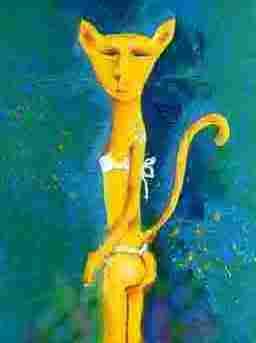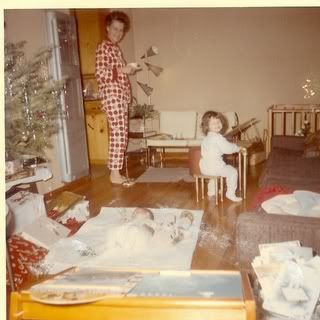Go  | New  | Find  | Notify  | Tools  | Reply  |  |
| Does This Avatar Make My Butt Look Big? Minor Deity  |
Like many of you, I learned to type on manual typewriters. The custom was to leave two spaces between sentences. The world has changed, and younger people advocate using one space between sentences. I have resisted this for years, but the time has come for me to change with the times. I am now trying to learn not to put that extra space after the period. Oh lordy, this is a hard habit to break! No matter how hard I try, I hit that bloody space bar twice. My work is littered with two spaces, and I have to fix it. I have even taken to forcing myself to retype the last word of the sentence and period, just to force myself to do it differently and break the muscle memory. I have about 45 years of typing with two spaces. I hope it doesn't take another 45 years to learn to type with one space. | ||
|
| Has Achieved Nirvana |
Not sure what software you're using, but I think some can help with some automation. The question asked here relates to the software automatically putting two spaces after a sentence, but I wonder if this somehow helps you:
https://answers.microsoft.com/...44-8408-840a8df43037 And you could always just keep typing two spaces, and do a search at the very end for two spaces and replace all occurrences with one space. Like you, I'm a long time two-spacer and I think it would be very hard to change...
| |||
|
| Beatification Candidate |
I even do this while texting...
| |||
|
| Has Achieved Nirvana |
I don’t see any reason to change, myself. I also still put 5 spaces between the state and the zip code - just like my typing teacher taught me.
| |||
|
Minor Deity |
 | |||
|
| Minor Deity |
The very fact that we all took typing tells it all.
| |||
|
| (self-titled) semi-posting lurker Minor Deity |
I don't know how I did it, but I managed to break myself of this habit during grad school. Maybe the fact that I was about 15 years older than all of my classmates had something to do with it. Now, when I'm editing something (for myself, or giving feedback to a colleague etc.) a double space jumps out at me like crazy, which makes it very easy to spot and correct them.
Unfortunately, people have decided that the double space at the end of sentences makes the writer look out of touch/dated. Which, depending on what one is doing professionally, could be an issue. -_-
| |||
|
Minor Deity |
I made the switch years ago when I found out that the first thing the editorial assistant did upon receiving my manuscripts was to use search-and-replace on the double spaces. I didn't want to be that person who stubbornly causes other people extra work and I didn't want to look old, so I bit the bullet. Do I buy their argument that single spaces look better? I do not. I think that one function of punctuation is to visually signal the ebb and flow of the text. It is also a signal to someone reading out loud that shows them where to breathe. However, I'm not willing to look unprofessional and stodgy to defend something that is, after all, only a convention.
| |||
|
| Does This Avatar Make My Butt Look Big? Minor Deity  |
It makes sense that the younger generation wouldn’t see value in two spaces. After all, none of them sees value in spelling, grammar, or punctuation. | |||
|
| Foregoing Practicing to Post Minor Deity |
When we typed on typewriters, and even early word processors, fonts were monospace — all letters and characters were the same width. So a single space after a period just made sentences look run-together.
| |||
|
| czarina Has Achieved Nirvana  |
As I've said before, one space or two is a typographical decision, not a grammar or punctuation decision. Typography has fashions. Back when computer typography first emerged, it became cool to jam all the letters together, because for the first time, you could. As a museum poster designer, I always preferred the look of monotype--that was when you set type one letter at a time, by hand, and the blocks of wood or lead that had the letters carved in them meant that the letters could only get so close. I love all that negative space in between the letters. So much more beautiful. I hate crowded type; it's ugly. Is it "correct"? No. One choice is no more correct than the other. It's a style choice. Two spaces after a period makes the type easier to read. Making the type easier to read is the job of a typographer who has a sense of refinement. Now that we don't even use computer typesetting, but the use of computers makes saving the extra space something anyone can do.... well, the world is going to hell, what else can I say? The origins of the single space was the wire services, who were trying to get more type on fewer pages. It is a practical matter for them, and a design abomination for everyone else. Not only do I put two space after a period, when I set the style and formatting of a manuscript, I also expand the spaces between individual letters. It is not only more beautiful, it is more readable.
| |||
|
| (self-titled) semi-posting lurker Minor Deity |
Seriously though, readability is so tricky. I really, really hate documents, student papers, cover letters etc. that are justified on both the left and the right side of the page. And I feel like it's harder to read that way. But at the same time, maybe that's just my imagination, because I know some books are set up like that. And Japanese text is set like that because there are no spaces (yes, no spaces at all) and you just go all the way to the end of the line and continue on the next line, regardless of whether the characters at the end of line 1 and beginning of line 2 are two characters in the same word. No hyphens either. I don't find Japanese difficult to read despite that. But I don't like reading blocks of text that are in all-caps because I find that hard to read. And I find text that's too spaced out hard to read. Are all of these things just what we're used to? I mean there are some things that are objectively hard to read, but others maybe are just habit??
| |||
|
| (self-titled) semi-posting lurker Minor Deity |
Here's what Japanese text looks like (assuming it displays correctly on your screens). I will arbitrarily do hard returns to mimic specific margins: これは日本語の例文です。終止符やコンマ なら、スペースが空きますが、それ以外は スペースを一切使いません。例え一行目か ら二行目に続く単語でもそのまま単語の真 ん中に改行します。 Basically th effect is justified on both sides. Here is is without hard returns, so depending on your device it might be laid out differently... これは日本語の例文です。終止符やコンマなら、スペースが空きますが、それ以外はスペースを一切使いません。例え一行目から二行目に続く単語でもそのまま単語の真ん中に改行します。 Anyway, with the exception of periods and commas, no spaces!
| |||
|
| knitterati Beatification Candidate  |
Interesting! And funny for me, because I started looking at it from right to left, and then realized that it must go left to right because the periods are at the ends of the sentences. I went to Chinese Language School on Saturdays as a child. Our texts read top to bottom, right to left.
| |||
|
| (self-titled) semi-posting lurker Minor Deity |
Japanese is funny because of all the different ways it can be written. It originally was only read top to bottom from the upper right. Then horizontal also became an option, but that was right to left. Then, presumably due to influence from the west, horizontal writing started to be written left to right, while vertical remained with its start in the upper right. At some point, horizontal writing that was written right to left basically fell out of favor, maybe this coincided with printing press technological advancements. So the main options were: vertical/top to bottom starting in the upper right, or horizontal reading left to right. Novels/fiction tends to be printed vertically, while essays, textbooks, manuals, rules, regulations etc. tend to be printed horizontally. Newspapers use a mix of vertical and horizontal text, sometimes in the same article! Internet text is usually horizontal but not always. And when you're writing in something like MS Word, the default is horizontal, but it's very easy to change it vertical. BUT! the option to write horizontally and read (or write) right to left remained and in contemporary Japan this kind of writing is primarily seen in 1) fancy scrolls or artwork, or 2) cars and ships on the passenger (or starboard) side. Why? Because if a vehicle is coming at you and you're on that side, you would read the characters right to left as the vehicle goes by. Sorry, that's probably more than you wanted to know!!
| |||
|
| Powered by Social Strata | Page 1 2 |
| Please Wait. Your request is being processed... |
|